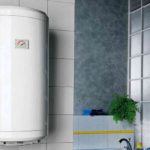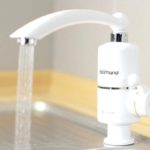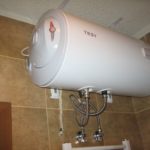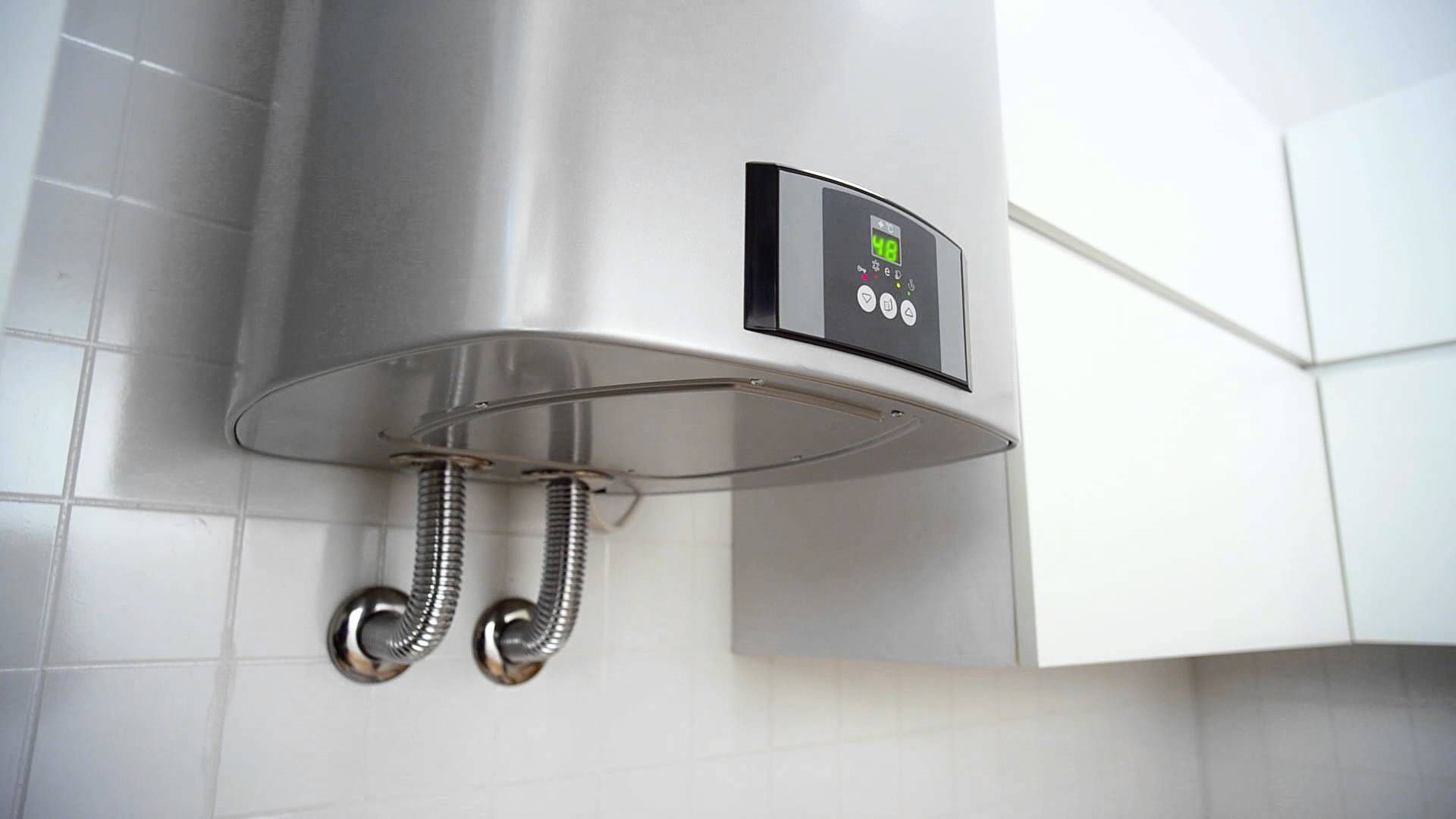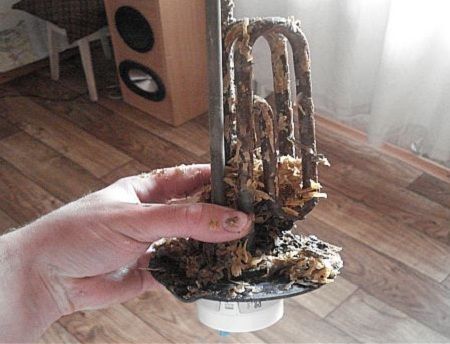Operating principle of instantaneous water heater
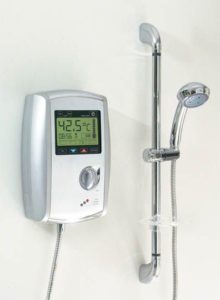 Human life in the 21st century has become as comfortable as possible. We have already begun to forget how it is to heat a home with wood and heat water in order to take a shower or bath. However, planned shutdowns of hot water in the summer periodically take us back to the past. Fortunately, progress does not stand still, and today you can easily solve this problem by installing an instantaneous water heater. Having small dimensions and weight, it will fit perfectly into the interior of a bathroom or kitchen.
Human life in the 21st century has become as comfortable as possible. We have already begun to forget how it is to heat a home with wood and heat water in order to take a shower or bath. However, planned shutdowns of hot water in the summer periodically take us back to the past. Fortunately, progress does not stand still, and today you can easily solve this problem by installing an instantaneous water heater. Having small dimensions and weight, it will fit perfectly into the interior of a bathroom or kitchen.
The content of the article
What does a flow heater consist of?
The body of the instantaneous water heater contains a heating element (heating element or spiral), a power regulator, a thermostat that turns off the heating element when the maximum heating temperature is reached, and sensors responsible for protecting against turning on the heating element without water in the system and the heating temperature.
Types of heaters
There are two main types of instantaneous water heaters - closed type (pressure) and open type (non-pressure).
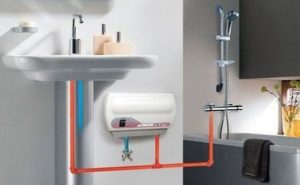 The fundamental difference between pressure and pressure is is that it can work on several points at once. That is, having installed it in one room, you can use hot water in the bathroom, in the kitchen, and wherever there are faucets. Before operating a device of this type, you need to make sure that a fairly high pressure can be created in the water supply.If the pressure is low, the pressure heater cannot operate.
The fundamental difference between pressure and pressure is is that it can work on several points at once. That is, having installed it in one room, you can use hot water in the bathroom, in the kitchen, and wherever there are faucets. Before operating a device of this type, you need to make sure that a fairly high pressure can be created in the water supply.If the pressure is low, the pressure heater cannot operate.
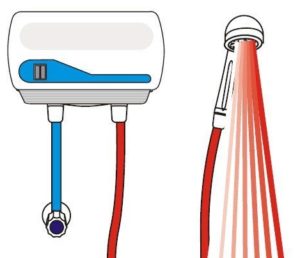 Non-pressure is installed only on one point. For its operation, the pressure in the pipe does not matter. Often, non-pressure water heaters are equipped with their own faucet or shower.
Non-pressure is installed only on one point. For its operation, the pressure in the pipe does not matter. Often, non-pressure water heaters are equipped with their own faucet or shower.
Water heaters also differ in the type of heating element used. In its quality, heating elements or heating coils can be used. Instantaneous water heaters with heating elements inside have large dimensions, while those with a spiral are more compact.
Another difference between water heaters is the type of control. Mechanical, more reliable, temperature adjustment is done manually using a toggle switch on the device body. When cold water enters, the membrane located in the body of the device moves, setting the switch lever in motion. However, if the pressure in the pipe is weak, the lever will not shift, and, therefore, the device will not turn on. Electronic, based on microprocessors and many sensors. More accurate, they allow you to set the water temperature on the display as accurately as possible. They are able to maintain any temperature, regardless of water pressure, and also use the optimal power level, thereby reducing energy consumption.
Operating principle of a water heater
The operating principle of an instantaneous water heater is that water is heated and maintained at a given temperature as it passes through a heating element. The device connects directly to the pipe directly next to the sink. When you open the tap in the body of the instantaneous water heater, the pressure switch is activated.The heating element turns on and after a while (from three seconds to two minutes) the water heats up to the temperature set by the user and flows out through the tap. The temperature is set manually by the user.
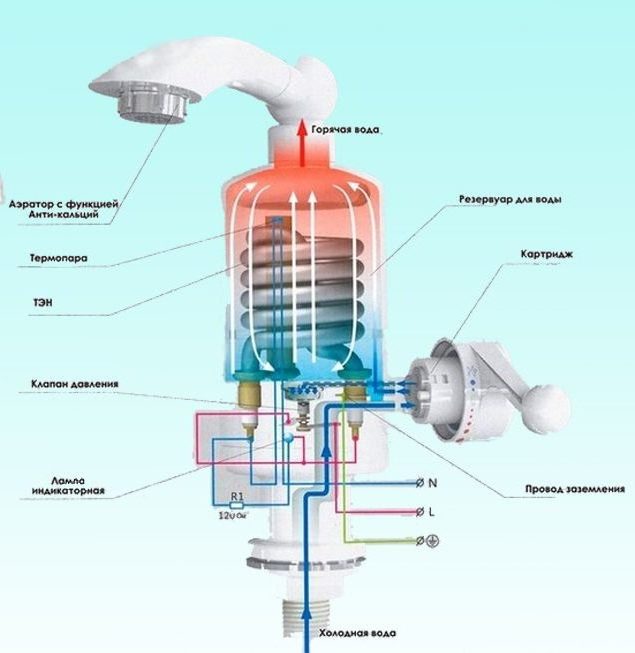
Conclusion
Before purchasing a water heater, you should pay attention to some operating features of this device:
— to reduce heat losses, it is more advisable to install a water heating device near the place of its use, i.e. near a sink or shower;
— when deciding on the location of the device, you need to take into account that splashes and drops of water on it are extremely undesirable;
- if the pressure in the water supply system is not high enough, then a lower temperature should be set, otherwise the device may not turn on at all;
— if the water contains a large amount of impurities, for example, lime or rust, then you cannot do without installing cleaning protective filters;
— installation of a water heater is possible only in heated rooms;
— after finishing using the water heater, you must close the valve supplying water to the device, turn off the device and remove the plug from the socket.
Despite all their features, instantaneous water heaters have a number of advantages:
— lower price compared to storage water heaters (boilers);
- compact size and weight. There is no need to allocate a special room for its installation; it can easily be hung directly above or below the sink (depending on the design);
- ease of use
— the ability to heat an unlimited amount of water in one use;
— absence of stagnation of large amounts of water in the system, leading to the proliferation of microorganisms.

